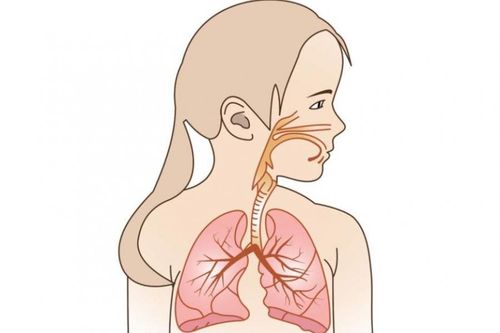This is an automatically translated article.
Nasopharyngeal adenocarcinoma is the most common cancer of the ENT region. The disease is common in men, aged between 30 and 40 years old, the incidence is increased in heavy drinkers and smokers. The disease progresses rapidly, causing many difficulties in daily activities, it is necessary to detect early to prevent.1. What is cancer of the tonsils of the palate?
The tonsils or tonsils of the palate belong to the structure of the Waldayer lymphatic ring. The tonsils are pink masses of tissue on either side of the throat that vary in size from child to child.Based on the structure of the tonsils, it is divided into two types: adenocarcinoma of the tonsils and adenocarcinoma of the tonsils. Carcinoma of the tonsils (carcinoma) accounts for 90% of the incidence in Vietnam, while adenocarcinoma of the tonsils (sarcoma) accounts for only 10%.
Carcinoma of the tonsils: More common in men, over 40 years old. Carcinoma of the tonsils: common in young people, progresses faster than carcinoma, often metastasizes to the lungs, liver, .. .
2. Risk factors
Alcohol and tobacco addiction are risk factors for cancers related to the gastrointestinal system and respiratory organs. Many scientists believe that people with adenocarcinoma of the nasopharynx have a history of heavy drinking and smoking, but have not found an association between the above risk factors and cancer of the tonsils.3. Clinical diagnosis
3.1 Carcinoma of the palatine tonsils 3.1.1 Stage of onset Often latent, undetectable on physical examination. Patients often do not go to the doctor at this stage or if the disease is detected because the patient is going to see another disease.3.1.2 The obvious stage The first symptom that appears is usually a feeling of entanglement in the throat, especially the patient only has a feeling of entanglement at a certain position. After a few months, the patient began to have difficulty swallowing when eating, accompanied by sharp pain pulling up the ear, maybe spitting up a little sputum and blood in some patients. Patients can go to the doctor with symptoms similar to acute or subacute tonsillitis, which will improve after taking a course of antibiotics. Sometimes, the disease progresses silently with no obvious symptoms of the throat, the patient only finds out when going to the doctor. Patients usually only go to the doctor when the obvious symptoms are constant pain, sharp pain in the ear, easy to get superinfection causing bad breath, voice sounds like a stuffy nose. Physical symptoms: Visit Examine carefully to detect ulcers, use a mirror if the ulcer is on the caudal or posterior aspect of the anterior column, easy to bleed in the tonsils, hard, clearly bordered, and the tonsil is larger than the contralateral side. Different morphology
Warts: Proliferation causes tonsil volume to enlarge very similar to sarcoma. Ulcers: Lesions of the nature of cancerous ulcers are superficial ulcers with slightly hard margins. Infiltrates: Usually spreads deep, so it is solid and firm to the touch. Sometimes a mixture of all three forms is encountered. Cervical lymph nodes: Examination of cervical lymph nodes should accurately assess the number, size, density, nature..., do a lymph node diagnosis, if suspected, do a biopsy of the lymph nodes to confirm the diagnosis.

Ung thư amidan khẩu cái có thể xuất hiện hạch ở cổ
Besides, the superinfection at the tumor makes the patient's condition worse due to infection. bacteria, exhaustion, may experience bleeding.
3.2 Adenoid connective tissue cancer Common in young people, progressing faster than carcinoma, can metastasize to liver, bone, lung,...
3.2.1 Stage of onset Same as Carcinoma , cancer associated very potential. Patients often have no special symptoms, often have symptoms of difficulty swallowing, very rarely painful swallowing, the tumor is too large to cause compression, it sounds like a muffled voice.
Examination found: One side tonsil is larger than the opposite side, but smooth, smooth, soft, no ulceration or infiltrate is seen. The anterior pole is distended and may vary in color from pinkish red to more purplish.
3.2.2 Prominent Stage The stage is recorded when the inflammatory episodes appear: fever, painful swallowing, distinct sensation of entanglement on one side, eating and drinking causing pain spreading to the same ear and bad breath .
Physical symptoms
The size of the tonsils is clearly enlarged, the color changes, ulcers are on the tonsil surface with pus, pseudomembranous at the bottom of the wound, surrounded by hard infiltrates.
The patient has many cervical lymph nodes, large, soft, and mobile at the angle of the jaw, under the jaw and along the sternocleidomastoid muscle.
3.2.3 Disease progression The disease progresses rapidly, not more than 1 year. Cancer cells infiltrate adjacent tissues, forming hard, non-motile masses that restrict the patient's eating and drinking. Along with that, the superinfection of the ulcer makes the patient's exhaustion worse.
The disease often has distant metastases in the lungs, mediastinum, liver, bones, ... because cancer cells follow the blood stream or lymphatic system to other organs to grow and create new tumors.
4. Treatment of cancer of the tonsils of the palate

Phụ thuộc vào mức độ nặng của bệnh và vị trí của khối u mà có phương pháp điều trị cụ thể
Surgery: Tumor is still localized, has not spread to nearby organs, then surgery to remove. Lymph node dissection, if necessary, surgical removal of the sternocleidomastoid muscle. Medical: Tumor is small, localized in the organization of tonsils and sensitive to radiation, then treated with radiation therapy. If the tumor has spread to nearby organs, depending on the location and nature of the tumor, we choose:
Chemotherapy Radiation therapy Anti-inflammatory, anti-infective, analgesia Combination of the above methods (multi-therapy) ). 4.2 Laryngeal tonsil connective tissue cancer Unlike carcinoma, adenocarcinoma of the tonsils is often sensitive to radiation, so radiation therapy is the mainstay. Recently, many countries have combined radiation with chemotherapy to bring positive results in disease treatment.
Vinmec International General Hospital is one of the hospitals that not only ensures professional quality with a team of leading medical professionals, modern equipment and technology, but also stands out for its examination and consultation services. comprehensive and professional medical consultation and treatment; civilized, polite, safe and sterile medical examination and treatment space.
Customers can directly go to Vinmec Health system nationwide to visit or contact the hotline here for support.
MORE:
Adults with chronic tonsillitis, should they be cut? Tonsillitis in adults: Don't be subjective Tonsillitis and curettage with the latest generation Coblator: Less pain, less bleeding













